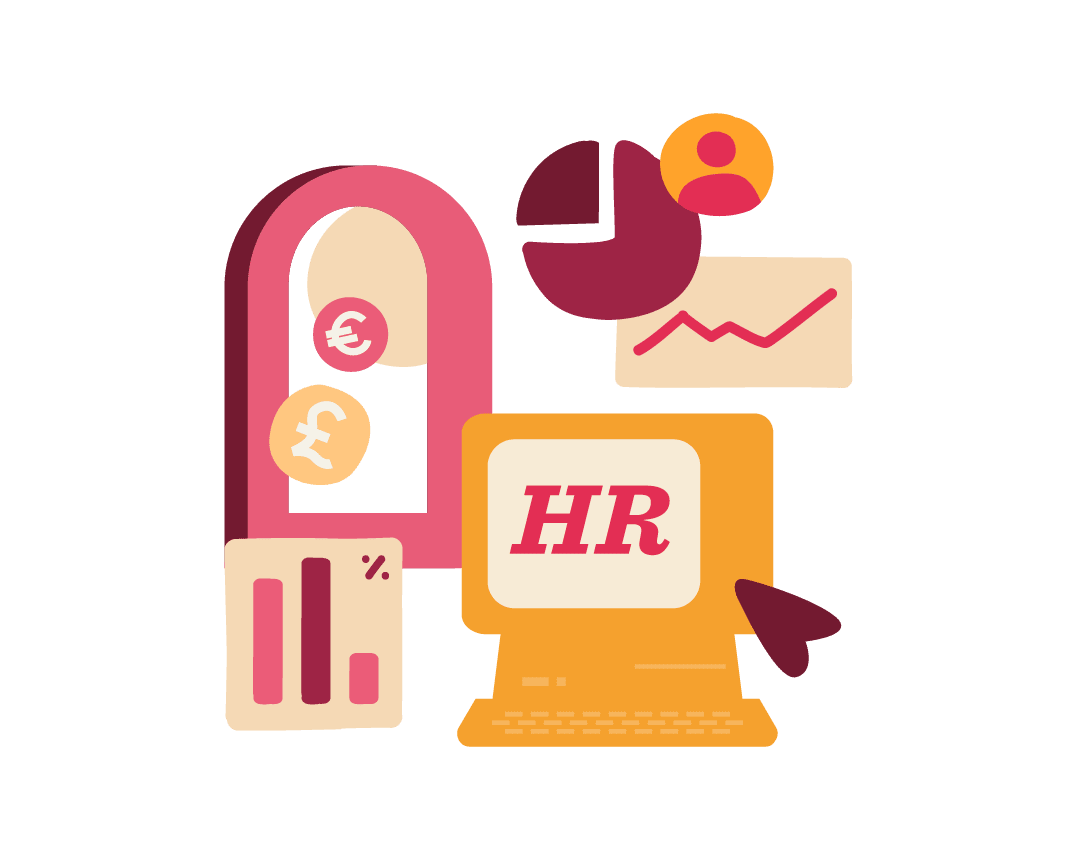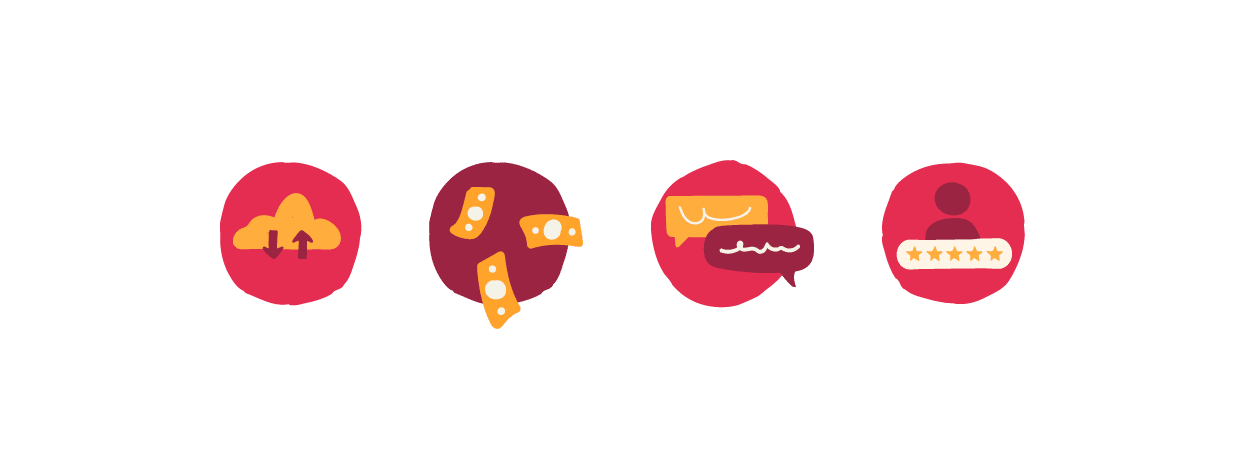Introduction
Understanding why diversity, equity, inclusion, and belonging (DEI&B) is a priority and how to evaluate key DEI&B metrics (like advancement and promotion rates to pay equity) is one thing. It’s another thing to take action and let them influence your organization’s operations.
But choosing metrics is only the opening act of a story that every business must tell. What comes next is making sure you’re seeing progress in those key DEI&B metrics as well as the wide-reaching positive impact of those metrics on your workplace culture and business priorities.
It’s imperative to always follow up on your DEI&B initiatives to ensure your efforts have a real impact. Noted business scholars Robin J. Ely and David A. Thomas put words to this phenomenon in a piece for Harvard Business Review, noting that “taking an ‘add diversity and stir’ approach, while business continues as usual, will not spur leaps in your firm’s effectiveness or financial performance.”
What matters, instead, is how the organization harnesses diversity and whether or not it reshapes its power structure to accommodate diverse people and perspectives.
While many organizations are making progress in this area, some companies report that DEI&B programs can be “the first to go” during economic downturns. Capturing snapshots of progress in DEI&B data and tying that progress to meaningful changes within the organization can be helpful when defending a program budget from reduction or elimination.
With this guide, we hope to connect the dots between taking action on DEI&B and generating an ROI that improves the bottom line. When you connect these concepts through data, it becomes easier for your company to justify and renew support in the programs that allow it to thrive through the ups and downs of growth.
So, let’s get started! The following four questions can help your organization make sense of its DEI&B data, making your efforts toward a more diverse and inclusive culture more impactful.
Question #1: How do we measure growth in our DEI&B benchmarks?
You’ve already worked hard to identify the DE&I elements that will support your business priorities. But how do you measure growth once you zero in on the metrics that matter to you?
Benchmarking DEI&B is where many companies come up against significant obstacles. Benchmarking data is not easily accessible, and to make it more complicated, there are legal issues surrounding the capture and disclosure of this information.
Companies must observe specific rules about a candidate’s private personally identifiable information (PII), and the rules change based on where you are in the world. On top of that, the HR industry is constantly improving its data protection practices, making PII and other forms of people data even harder to access.

As a first step, benchmark your DEI&B progress against your own metrics year after year. Start tracking as soon as you can—this can help make the fuzzy picture a little clearer. To understand how the make-up of your company compares to others, augment the data with external resources, including:
- Compensation survey data from industry publications like the Society for Human Resource Management’s Compensation Data Center and various private research vendors
- Industry demographic benchmarks provided by governmental institutions like the United States Bureau of Labor Statistics or the OECD for global data
- Human capital and talent access benchmarkdata you can use to analyze by industry, size, region, and sector, like Salary.com’s CompAnalyst® Market Data
Connecting the dots in your benchmarking data will require practice and consistency, but it will give you insights you can use to start informing your decisions right away.
For example, consider cost-per-hire within your industry. Using SHRM’s human capital benchmarking reports, you’d discover the average cost per hire in 2022 was $4700. You can compare the data in this report to your organization’s average cost and assess whether or not the difference throws up any red flags.
A red flag could signal costs are too high and could use tightening. Alternatively, it could signal costs are too low compared to the industry, which might threaten your ability to secure the best candidates for company roles in a competitive market.
Question #2: How can we collect and store information?
External benchmarking resources provide valuable insights into actions companies of your size and in your industry are taking. But they only become truly relevant when you can compare them to your own company data, which requires you to collect and store the information internally. The best way to do this is with a comprehensive and buildable HR tool that becomes flexible and buildable through integrations to create a customized, agile home base for DEI&B metrics.
DEI&B data has come a long way from simple spreadsheet-style analysis in top-tier, modern HR tools. Today, these powerful tools allow you to collect and organize data flexibly to evaluate the state of underrepresented groups within your organization. You can also deploy additional tools like Lever, Greenhouse, or Workable to capture a holistic view of your data.
Take KPI dashboards as an example: Modern HR tools typically include them and can help you identify employee groups by age, gender, ethnicity, and more. These tools give you insight into the real-life activity of your employee lifecycle so you can spot and fix trends that negatively impact your DEI&B efforts. Leverage them to evaluate moments throughout the hiring and employee lifecycle, from time spent per hiring round and pass-through rates for interviews to retention and turnover across different employee groups.
In fact, as reported in SHRM, Dropbox used this kind of data to discover a 10 percent increase in drop-off for underrepresented candidates versus other candidates at the phone-screen stage. Because the recruitment team was monitoring the data, it was able to look more deeply into the issue and redesign the phone-screen preparation process for all candidates, ultimately eliminating the fall-off rate for underrepresented candidates.

Question #3: How can we support DEI&B in the employee lifecycle?
Meeting DEI&B goals starts with who and how you hire, which is why so many resources focus on the hiring process. The next step is to extend those values across the rest of the employee lifecycle so that they remain a cornerstone of your company culture. Best DEI&B practice means baking DEI&B into the entire employee lifecycle, from your candidate pipeline and screening processes to your promotion practices and exit interviews.
When companies support DEI&B throughout the employee lifecycle, you’ll see companies with successful programs simultaneously approach diversity, equity, and inclusivity as corporate values and strategic business priorities.
Companies put this value into action by using pulse surveys and listening tools like 15Five and Culture Amp (and more) to understand what their people need most. Then, they create resources or sponsor Employee Resource Groups to meet those needs.
Some companies track diversity metrics by business unit to assess how each team is progressing on hiring, promoting, and retaining a diverse mix of talent.
These companies collect and monitor DE&I metrics in easy-to-use tools that fully integrate with their HR technology, which democratizes the data and makes it accessible to people managers, not just data analytics teams that may not have the same priorities as HR.
In tightening the loop between collecting information and taking action, the data becomes more useful, people managers become more effective, and people have a better chance of getting what they need to feel included and fully empowered to work (and stay) in their role.
Question #4: How can you refine your strategy using data-driven insights?
Data gives your company unprecedented insights into how DEI&B supports your organizational strategy and pushes your business forward. This data can help you build a holistic and healthy internal business cycle where DEI&B goals inform your organizational strategy, and the results of your DEI&B efforts push your organizational strategy to new heights.
But, to complete the cycle, you need to take action.
This brings us back to Ely and Thomas. Their research found that organizations that adopt “a radically new way of understanding and leveraging diversity could reap the real and full benefits of a diverse workforce. This new way entailed recruiting and retaining people from underrepresented ‘identity groups’ and tapping their identity-related knowledge and experiences as resources for learning how the organization could perform its core work better.”

Increasing diversity and inclusion up and down the corporate hierarchy infuses the whole organization with untapped potential and allows DEI&B to act as an engine for making better business decisions. Take, for example, how the following companies connect their DEI&B goals to important strategic and financial business decisions:
Mattel
The global toy company Mattel set aggressive diversity and inclusion goals that span from pay equity to representation of women and ethnicities by level and more. Measuring data associated with these goals directly feeds into the company’s organizational strategy and financial decisions.
HubSpot
Marketing technology provider HubSpot considers DEI&B mission-critical and shows it by carefully tracking and analyzing its employee demographic data on ethnicity, age, parental status, and expanded gender identities. This comes out in the company’s business strategy in the form of investments in Employee Resource Groups, tools for managers, and expanding pay transparency and equity.
McDonald’s
The fast-food franchise McDonald’s lays out its strategy in connection to diversity and inclusion by looking at the diverse communities in which the company operates and accelerating cultures of inclusion and belonging within its global operations. These high-level values make it easy to identify behaviors that help the organization achieve its DEI&B and business goals in one step.
Recommended For Further Reading
Harness the power of DEI&B to boost your bottom line
Measuring DE&I metrics is the first step in capturing big-picture benefits from your efforts. The real impact comes when you harness diversity and allow it to influence how your organization grows and changes over time.
Studying DEI&B within your organization positions you to capture the total ROI on your talent, ultimately positioning you to thrive in the long term. The more time you spend examining your DE&I data, the more insights you’ll gain, leading to a better understanding of your organization’s needs and opportunities—boosting productivity, creativity, and the business’s bottom line.
Of course, measuring benchmarks, creating goals, and monitoring strategic outcomes differs for every company because every business starts at a different place. But the goal is the same: Building a rich culture with diverse representation and more robust innovation and thinking, which allows us to achieve the highest levels of employee satisfaction, competitiveness, and business success.

Meet Bob
At HiBob, we’ve built a modern HR platform designed for modern business needs—today and beyond.
We focused on building something that is robust yet intuitive and easy-to-use, which has led Bob to be the platform of choice for thousands of fast-growing, modern, mid-sized organizations.
For HR, it delivers automation of many common processes, allows greater oversight and visibility of the business, and centralizes all people data in a secure, user-friendly environment.
For managers, it provides access to data and insights to help them lead more effectively and streamline processes.
For employees, it’s the tools and information they need to connect, develop, and grow throughout their journey.
In a short time, Bob can be deployed to enable communication, collaboration, and connectivity that drives stronger engagement, productivity, and business outcomes.
